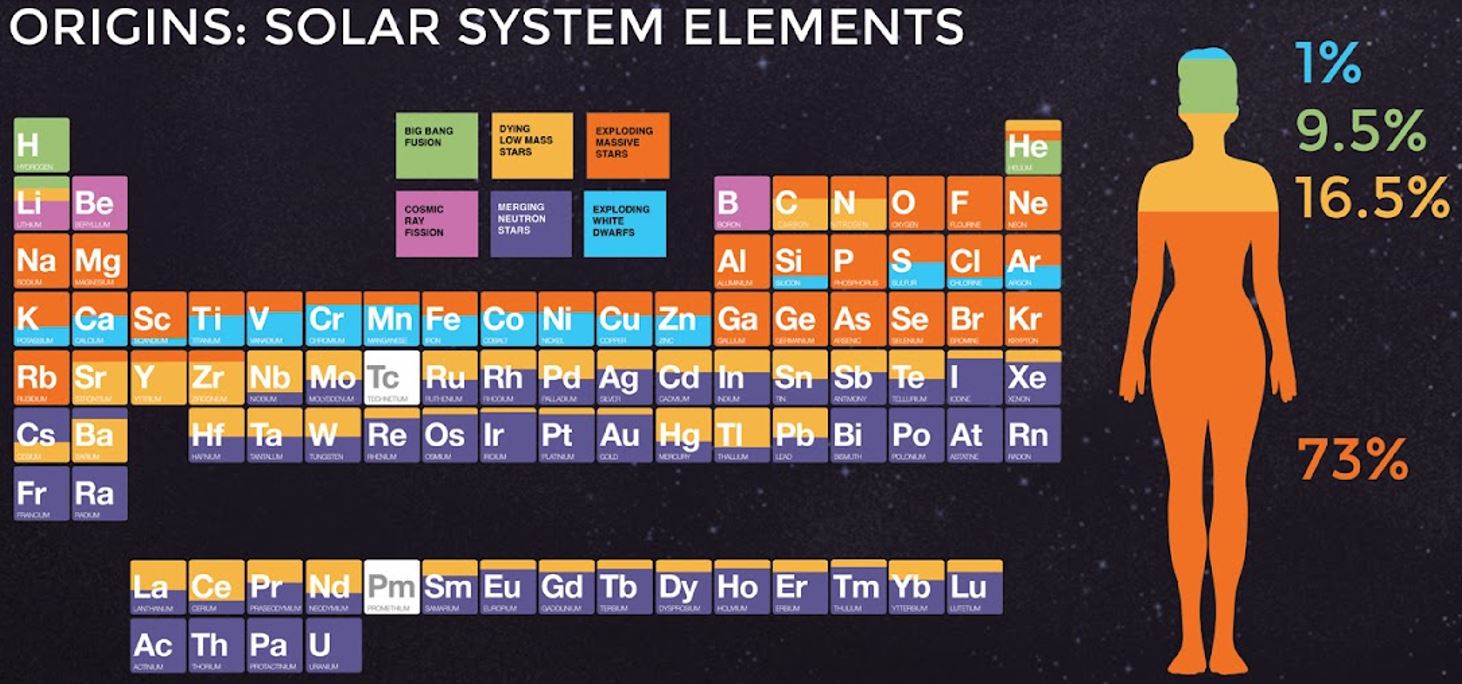Ask Ethan #58: What is dark energy?
Sure, the Universe is expanding, and that expansion is accelerating. But beyond simply calling the cause “dark energy,” what do we know about it?
Image credit: NASA, ESA, H. Teplitz and M. Rafelski (IPAC/Caltech), A. Koekemoer (STScI), R. Windhorst (Az. State University), and Z. Levay (STScI).
“I must choose between despair and Energy —— I choose the latter.” -John Keats
All week long, some of you have been racking your brains to come up with the deepest, most mysterious questions about the Universe to highlight for our Ask Ethan column. We’ve gotten some outstanding questions and suggestions that you’ve sent in, and while it’s a pity I can only choose one, this week’s honor goes to Piyush Gupta, who asks:
[We] have found that dark energy makes up about 70% [of the] energy in the universe. We have evidence of dark energy from multiple observations. It has [a] real effect on the evolution of [the] observable universe. But what is dark energy? Do we have any idea? Do we have any good models for it?
As it turns out, we do have some good ideas, but let’s make sure we’re all on the same page first.

The first thing you have to accept is the concept of spacetime, and the most important concept of general relativity: that the amount and type of matter-and-energy in your Universe is inextricably linked to how the spacetime of your Universe evolves as we move forward through time. Before Einstein, it was assumed that both space and time were constant, fixed entities. On the one hand, there was space, which you could visualize as a static, three-dimensional grid, and time, which was a separate, fixed continuum that every point in space moved through together.
In general relativity, all of that changes in two hugely important ways.
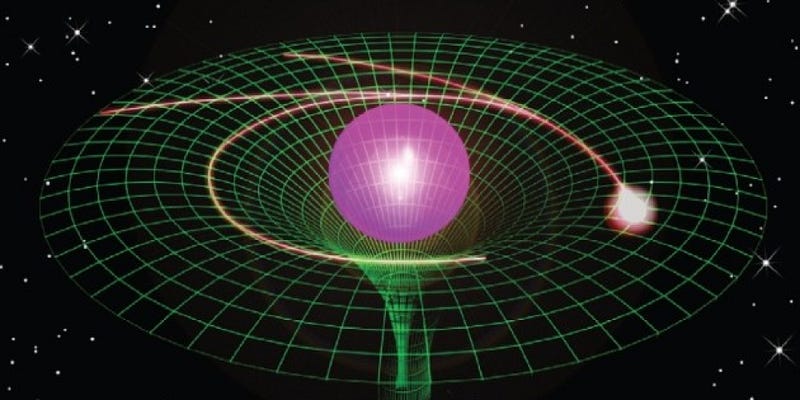
First off, space and time are by their very nature inseparable. All objects are moving through spacetime relative to one another, and it’s this very concept — that it’s not just your location in space and time but also your velocity, or your motion through space and time, that matters — that relativity gets its name from. If you and I are at the same point in spacetime, but you are moving at a significant speed relative to me, we not only move through space differently from one another, but we move through time differently as well. This is where the whole idea that clocks appear to run at different speeds to observers in different reference frames come from, and where the twin paradox arises from.
So not only are space and time not absolute entities, but they’re not independent of one another either. All objects are moving through both space and time, and if you move through space more rapidly relative to someone else, you move through time less rapidly than they do as a result. This is why, if you got into a rocket ship traveling at 99% the speed of light, went 9.9 light-years away, turned around and came back at 99% the speed of light, everyone on Earth would have aged 20 years, but you yourself would have aged just under three years in that time.

But the second thing that’s different is that the spacetime you inhabit right now — the one that describes the entire Universe — is different at this very present moment than it was when you began reading this sentence. This is because the Universe is expanding as time goes on, with the expansion rate determined solely by all the different types of matter-and-energy present in the Universe at this very moment. This expansion rate changes over time, as the energy density, or the amount of matter-and-energy per unit volume, drops for matter and radiation as the Universe expands.
But not everything in the Universe needs to be matter and/or radiation; there are plenty of other allowable contributors, including:
- topological defects (like magnetic monopoles),
- cosmic strings,
- domain walls,
- intrinsic spatial curvature,
- energy inherent to space itself, and
- a variable field, which could have any properties whatsoever.
The wonderful thing about general relativity is that its predictions are so robust that all we have to do, in principle, is measure how the Universe has expanded over time, and we can learn all about what the different types of matter-and-energy in the Universe are, what their relative abundances are, and with what confidence we can state that they are the things we’re assuming them to be and not something else.

Our observations come from three different types of sources in general: the first is from astrophysical distance indicators such as stars, galaxies, and supernovae. By measuring how bright these objects appear and comparing them with how bright we know they intrinsically are, we can figure out how distant they must be. In addition, we can measure their redshift, which gives us a handle on how the Universe has expanded since light was first emitted from them. This combination of factors gives us one method of measuring how the expansion rate of the Universe has evolved over time.
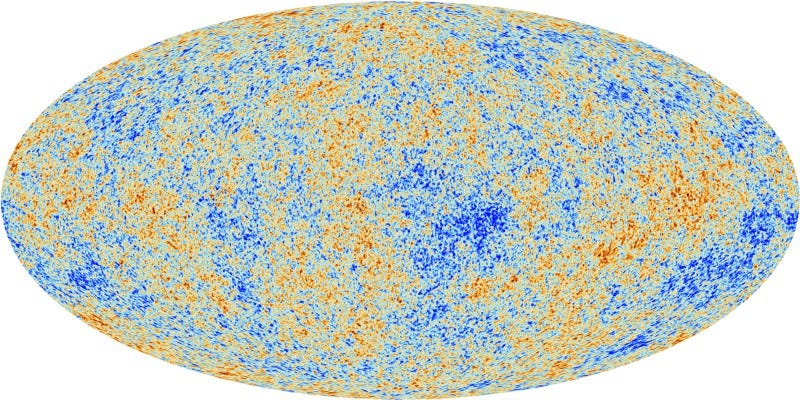
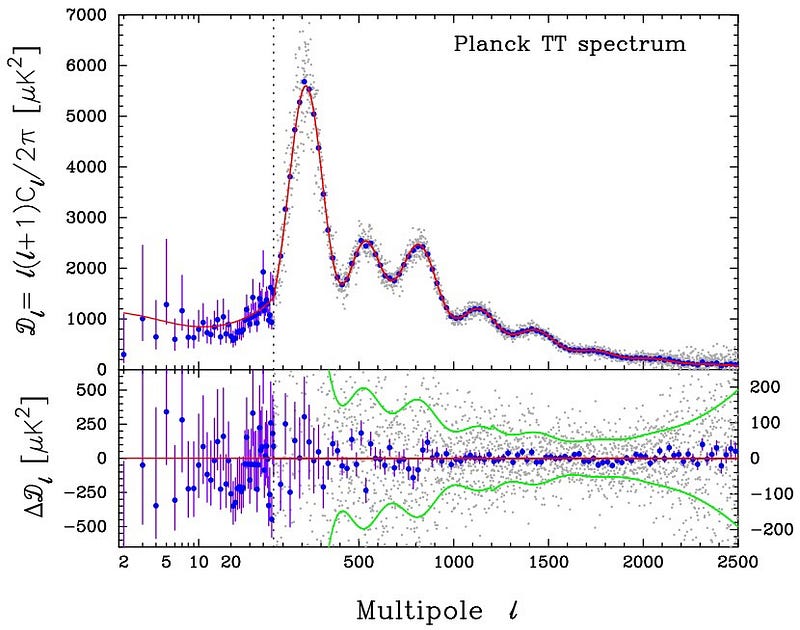
A second method is to measure the various fluctuations in the cosmic microwave background. Because of the way matter and energy interact with one another as the Universe expands, and the fact that the leftover radiation from the Big Bang hasn’t scattered off of ionized matter since the Universe was only a few hundred-thousand years old, we get a snapshot of the composition of the Universe from a very long time ago. But all of that light has also been traveling for some 13.8 billion years, redshifting as the Universe expanded, giving us another measurement of the expansion rate’s entire cosmic history. So that’s a second method.
And finally, we can look at the structures formed in the Universe on the largest scales. Because there’s a great cosmic race that’s been going on since the birth of our Universe that continues to the present day — between gravitation, working to attract matter and form collapsed structures, and the expansion rate, working to drive everything apart — we can look at the sizes, scales and densities of structure as well as how they’ve evolved over time to get a third measurement of our cosmic history.
By combining all three classes of measurement, we can check for consistency and accuracy: showing that all three measurements point to a single result that fits all the data. In fantastic news, they do!
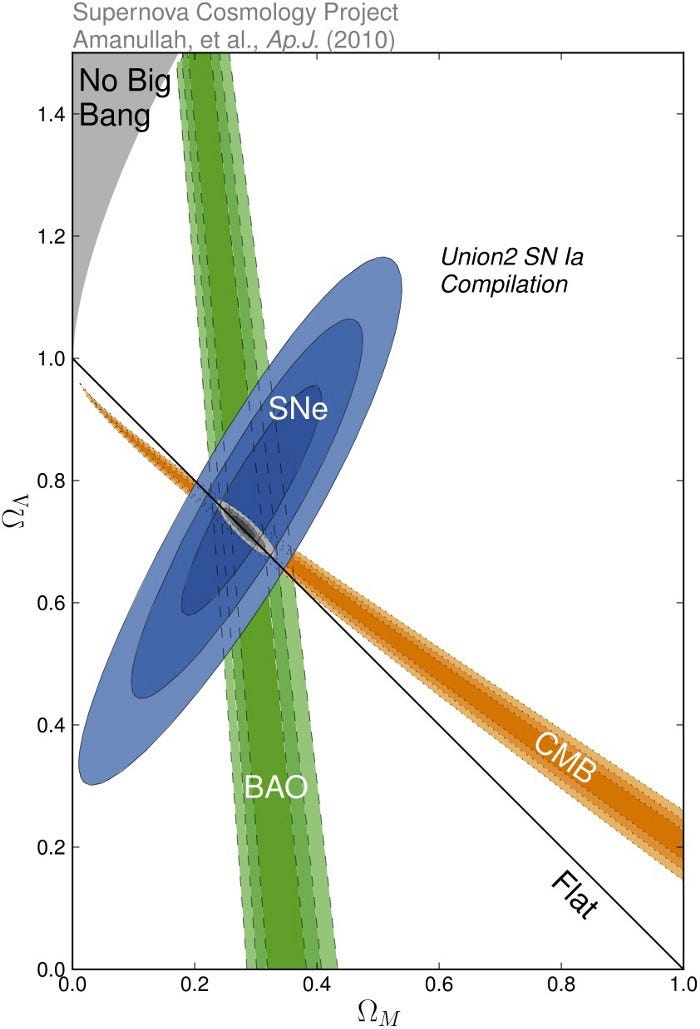
With that behind us, we can also determine what our Universe is made out of, and state what our level of confidence is. Right now, it appears that our Universe is made up of:
- 0.01% in the form of photons, or radiation in the form of light,
- About 4.9% in the form of normal, proton-neutron-and-electron based matter,
- About 27% in all forms of dark matter combined, including neutrinos, which themselves make up about 0.1% of the total, with the rest being of an unknown composition,
- And the remaining 68% or so in the form of dark energy.
So what is this “dark energy” I speak of?
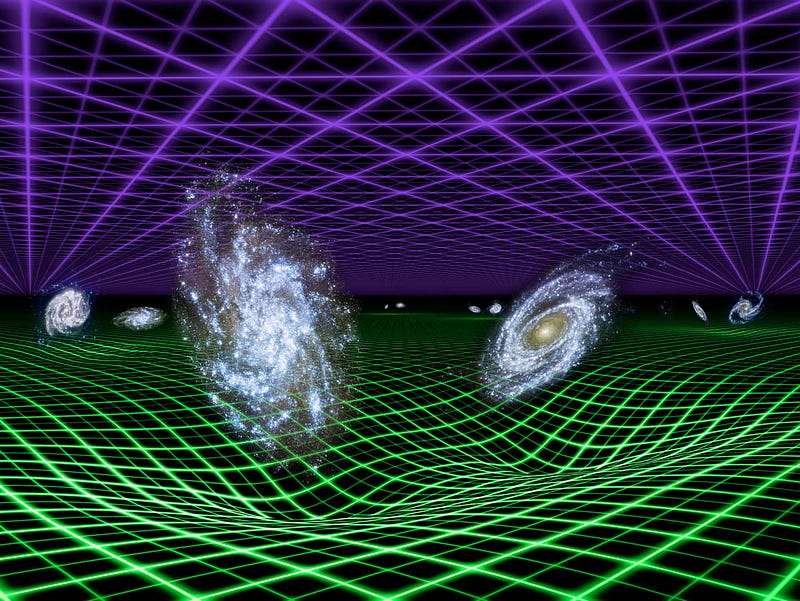
To the best of our observations — which tell us how this form of energy evolves over time — it is indistinguishable from a cosmological constant. In general relativity, a cosmological constant is energy intrinsic to space itself, so as the Universe expands and more and more space appears between the galaxies, the energy density of dark energy doesn’t decrease, even as the other forms of matter-and-energy do have their densities drop! This is why the Universe is not only accelerating in its expansion today, but why it has been doing so for the past six billion years.
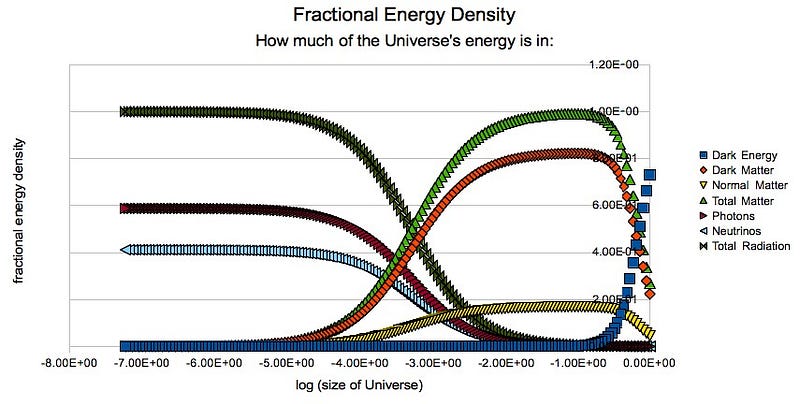
In quantum field theory, a cosmological constant is equivalent to the zero-point energy of the quantum vacuum, meaning that what we are seeing is possibly a connection between all the quantum fields in the Universe and gravitation, although this is not something we know how to sensibly calculate at present.
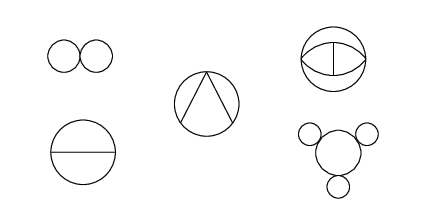
We can always admit the possibility that dark energy isn’t exactly a cosmological constant: perhaps it was stronger (or weaker) in the past, and perhaps it will be weaker (or stronger) in the future. But as our observations have improved, constraints on that have gotten very tight.
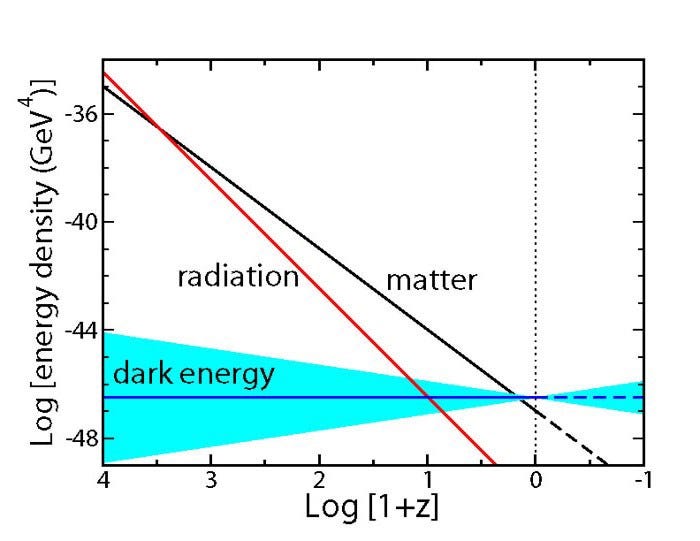
We can parametrize the way dark energy changes over time very simply — to first order — with an equation-of-state parameter, w. If w = -1.0, exactly, we have a cosmological constant. If it were w = -1/3, we would have spatial curvature; if it were w = -2/3, we’d have domain walls, and in principle it could even be something strange and dynamical, that varies with time.
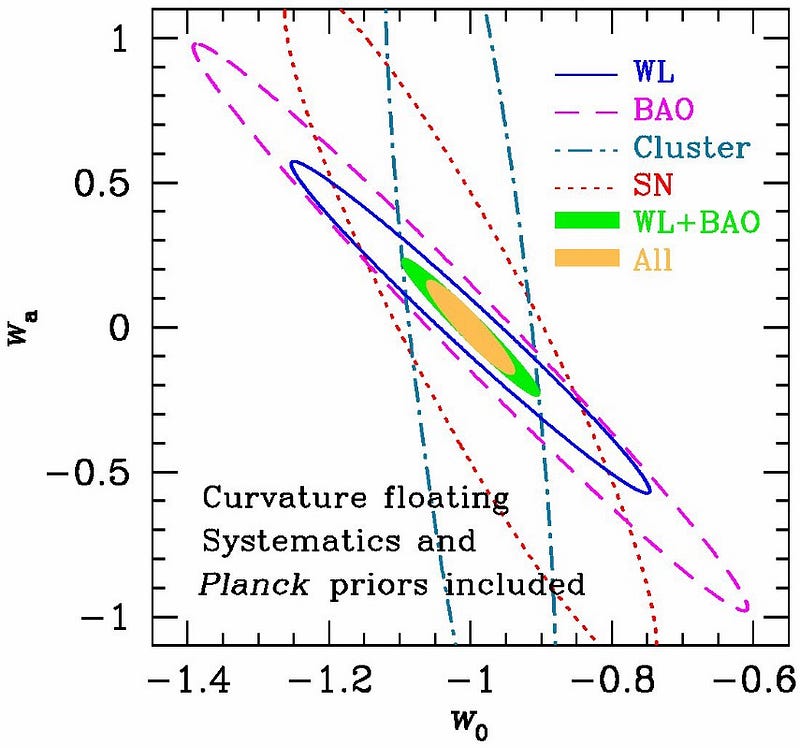
But the simplest model is to assume it just has a constant value, and right now our best data constrains its value to be w = -1.02 ± 0.08, a pretty strong indication that it is likely just a cosmological constant, or energy inherent to space itself, or the zero-point energy of the quantum vacuum, which is itself non-zero. If it turns out that w really is less than -1.0, our Universe will die in a big rip, a fantastic scenario that we explored just a few months ago!
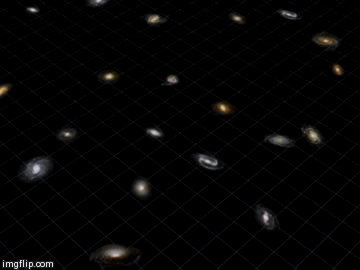
Figuring out whether it’s true that w = -1.0000, to arbitrary accuracy and increasing numbers of digits, is a job for the observational astronomers of the 21st century (and possibly beyond), while figuring out what it means for the Universe or how to compute that value from either relativity or quantum field theory is a job for the theorists. Right now, all the data points to a cosmological constant, but you never know: it could be a scalar, tensor, or dynamical field of some sort with much more complicated behavior than we presently observe. But it could also just be plain old energy inherent to space itself, and until there’s observation to the contrary, that’s where the smart money is.
Thanks for a great question, Piyush, and thanks for giving us all the opportunity to learn a little bit more about one of the least understood forces and sources of energy in the Universe. There’s plenty more to learn, but even though this is one of the greatest unsolved mysteries in all of science, there’s an awful lot we do know about it! If you’d like a chance to be featured on Ask Ethan, send in your questions and suggestions here, and who knows? The next column could be yours!
Leave your comments at the Starts With A Bang forum on Scienceblogs!
